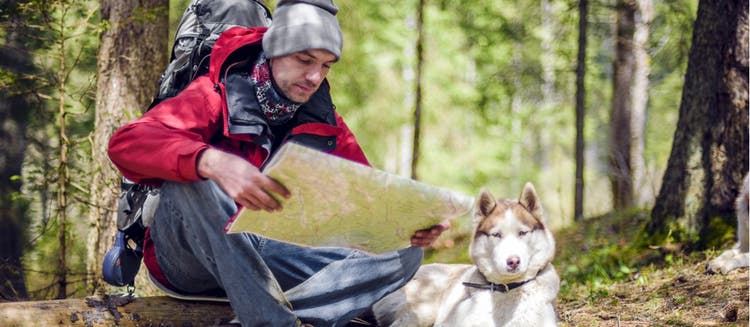
Don’t Just Go for Walks: Unique Ways to Get Active with Your Dog
Walking the dog. Is it enough?
If you walk your dog every day, that’s fantastic. If you have a very large or very small dog, that can be plenty of exercise and stimulation. However, if you have a sporting dog, working breed, or a mix with either, walking is helpful, but it might not be enough. Walking is a wonderful warm up for a high-energy dog, but they need more exercise. If you are a high-energy person, a walk may not be enough for you either.
Exercise is good for you and your dog. So why aren’t you working out together? We’re not talking about taking your dog to the gym, although you may want to check out Doga (yoga for dogs). We’re talking about getting outside and enjoying some fresh air. After all, if you’re cooped up in an office all day, chances are your pooch is cooped up at home too. Dogs that don’t get enough exercise and activity can quickly develop behavioral problems. Come to think of it, lack of exercise can make people cranky too. You could both use the workout.
Daily exercise is recommended unless the weather is especially dangerous or a medical problem limits your dog’s activity. If there is a medical problem or your pet is obese, consult your veterinarian about exercise limitations.
But if your dog is ready, willing, and able, here are some great ways to get active with him.
Take a Hike
Hiking with your dog can be one of the most joyful experiences of pet ownership. Besides being great exercise, it’s a good way to spend quality time with your canine chum. Taking a walk in the woods seems like a simple thing to do, but you can maximize your enjoyment and your dog’s safety by preparing ahead of time.
Before going hiking, check for any restrictions in the area. For example, national parks and some state parks do not permit dogs on hiking trails. Most parks also require your pet to be on a leash, unless you are in a designated dog park. Leash walking is always a safer option as it decreases the chance your pet will wander into trouble. Unusual sights, sounds, and smells may tempt the unleashed dog to stray deeper into the woods or bring about encounters with other animals that could cause a confrontation.
Strap on the In-Line Skates
Some rollerblading enthusiasts live for the mornings when they can leash up their pooch and go for a nice sprint together along a shaded park path. Not only is it great exercise, but the dog is often delighted that their human buddy can keep up with them. However, among rollerblading enthusiasts, there is no solid consensus on whether dogs and skating mix. But all agree that it should not be attempted unless you are a highly-skilled skater and have confidence in your dog’s obedience training. They further agree that skating with dogs should only be done in an area without vehicles, and at a time when fewer people are about.
But, if you’ve confident in your skill and your dog’s training, then by all means give it a try. Just remember, even the smallest obstacles — pebbles, cracks in the pavement, etc. — can trip up even the most skilled skaters (and their dogs).
Hop on a Bike
With a few precautions and a bit of conditioning, dogs are natural biking partners. Most dogs love to get out and run, but size and endurance are important considerations. Among the best biking partners: Akitas, Labradors, huskies and collies.
You can take your dog cycling with you at any age, except when he’s a small puppy. Most well-conditioned 2- to 5-year-old dogs can maintain a speed of about 10 mph for an hour or more — just right for trail riding. There are some dogs, however, that aren’t designed to be out in the heat, namely short-nosed dogs such as bulldogs and the Pekingese.
Start your dog’s conditioning program slowly, going just a few miles each day, building up the distance gradually. If your dog is over 5 years old, he may be starting to slow down, so ease up. Your dog can run with you for many more years, as long as you don’t overdo it. If your dog lies down during training or lags behind at a speed under 5 mph, end the session immediately. Keep in mind, too, that we’re talking trail riding here. If you’re going to be riding on pavement or in traffic, do the dog a favor — and leave him home.
Dance the Night Away
We’ve hiked with them, biked with them — even rollerbladed with them. So, why not dance with them?
Dog lovers in growing numbers are training their pets — and themselves — in a sport called “canine freestyle,” a pastime in which the dog and its owner move in tandem through a set of choreographed steps to music of their choice.
Organizations in the United States, Canada, and Great Britain hold championships that are drawing ever larger groups of freestyle enthusiasts, who swear that their canine Barishnikovs love the music, the teamwork, and the chance to show off.
Resources for Exercising and Playing With Your Dog
Want more useful advice on canine exercise and play? Check out our featured articles: